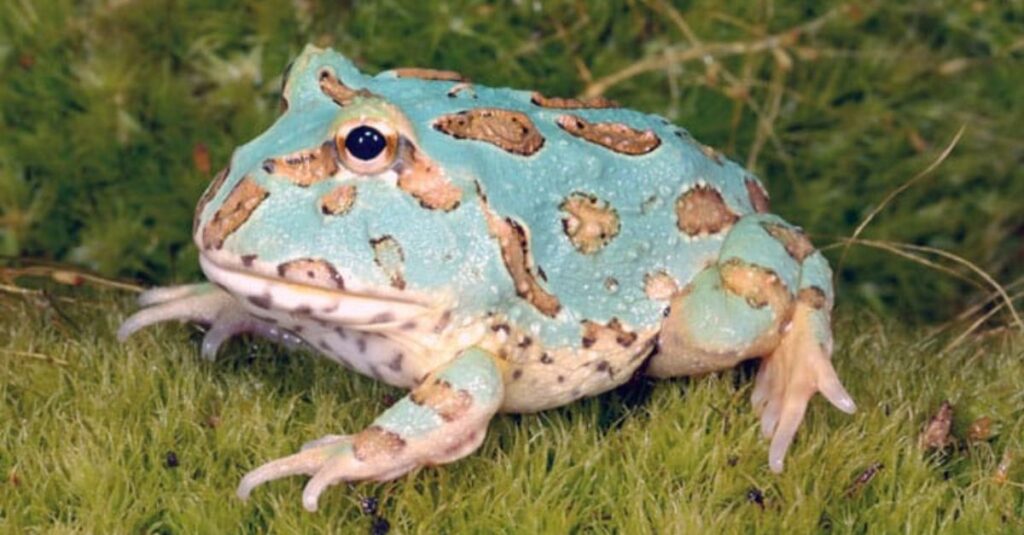🐸 Best Lighting Setup for Pacman Frog Enclosures
Light Needs for Healthy, Happy Horned Frogs
Best Lighting Setup - At a Glance
Pacman frogs don’t need special lighting like UVB, but they do benefit from a 12-hour day/night light cycle. Use low-output LED or fluorescent lights to simulate daylight. Avoid bright or hot bulbs that can dry out the habitat. This guide covers the best lighting options for frog health and comfort.
Lighting is a hot topic for Pacman frog owners—but not because these frogs need a lot of it. Unlike reptiles that require basking bulbs or strong UVB rays, Pacman frogs are nocturnal and thrive in low-light conditions.
That said, a proper lighting schedule still plays an important role in your frog’s circadian rhythm, behavior, and even digestion.
In this article, you’ll learn:
- Whether Pacman frogs need light or UVB
- The best lighting types for their enclosures
- Tips for balancing light with temperature and humidity
- What to avoid when lighting your frog’s habitat
Do Pacman Frogs Need Lighting?
Technically, no—but functionally, yes.
Pacman frogs do not require UVB to survive, but they still benefit from a consistent 12-hour day/night light cycle to help regulate their natural behaviors.
Lighting Basics:
No UVB required
No basking light needed
Low-light setups are ideal
Use lighting to simulate natural day/night rhythm
Best Types of Lighting for Pacman Frog Enclosures
Here are your top lighting options
LED Fixture (Low Output)
Energy-efficient and doesn’t emit heat
Ideal for simulating daylight in dim rooms
Pairs well with bioactive setups and live plants
Energy-efficient and doesn’t emit heat
Ideal for simulating daylight in dim rooms
Pairs well with bioactive setups and live plants
✅ Recommended for: Daily light cycle and aesthetics
Fluorescent Light (T5 or T8)
Emits soft, widespread light
Safe for frogs and good for plant growth
Can be set on a timer for consistent light cycles
✅ Recommended for: Terrariums with live plants
UVB Light (Optional)
Not required, but low-level UVB (2.0–5.0) may be beneficial in long-term captive care
Some studies suggest UVB can improve vitamin D3 metabolism and bone health
Must be filtered through fine mesh and never shine directly on frog
Not required, but low-level UVB (2.0–5.0) may be beneficial in long-term captive care
Some studies suggest UVB can improve vitamin D3 metabolism and bone health
Must be filtered through fine mesh and never shine directly on frog
⚠️ Use sparingly and only in tall enclosures with ample shade and humidity
Ambient Room Light
If your tank is in a naturally lit room (no direct sun), that’s usually enough
Supplement with low-output LED only if the room gets very dark
Lighting Types to Avoid
| Type | Why to Avoid |
|---|---|
| Incandescent bulbs | Too hot, dries out humidity, risk of burns |
| Halogen lights | Overheats the tank and causes dehydration |
| High UVB (10.0) | Unnecessary and stressful to frogs |
| Color-shifting bulbs | Can confuse frog’s circadian rhythm |
Remember: Heat and light should be controlled separately in Pacman frog setups.

What About Nighttime Lighting?
Don’t use light at night.
Pacman frogs are nocturnal and do most of their hunting and moving after dark. Exposing them to light at night can:
Disrupt sleep
Cause stress
Interfere with digestion and feeding
If you want to observe your frog at night, use infrared or dim red lighting, but only for brief periods.

Should You Use
a Timer
a Timer
Yes! A digital or mechanical light timer will:
Keep your frog’s internal clock consistent
Prevent you from forgetting to turn lights on/off
Mimic the 12-hour day/night cycle found in nature
Example Schedule:
Daylight ON: 7:00 AM
Daylight OFF: 7:00 PM
Lighting for Bioactive Setups
f you’re using live plants, you’ll need plant-safe lighting:
Use a full-spectrum LED or fluorescent grow light
Position above a mesh screen to diffuse brightness
Monitor plant growth and avoid algae buildup
Related PacmanFrog.com Articles
Final Thoughts
While Pacman frogs don’t need complex lighting setups, they still benefit from a consistent, gentle day/night cycle. A simple LED or fluorescent fixture on a timer will keep your frog’s circadian rhythm stable—and help you better observe its natural behaviors. Avoid hot or bright lights, and let your frog live in a low-lit, cozy environment that mimics the forest floor.
🙋♂️ FAQ: Pacman Frog Lighting
Q: Can Pacman frogs see light?
A: Yes, but they prefer low lighting due to their nocturnal nature.
Q: Is UVB harmful to Pacman frogs?
A: High levels can be stressful. Use low-output UVB (if at all), and ensure the frog has shaded areas.
Q: Should I turn lights off at night?
A: Absolutely. Pacman frogs need darkness to rest and remain healthy.
